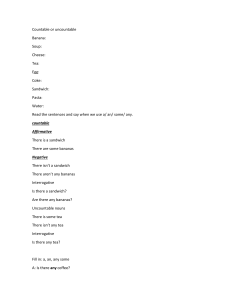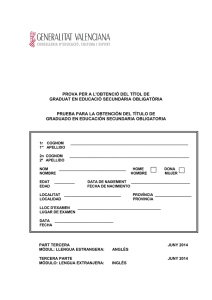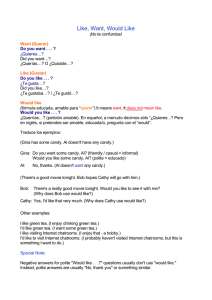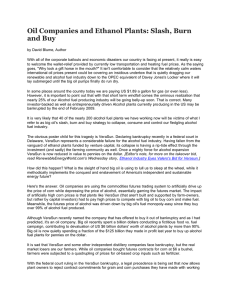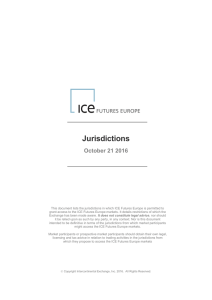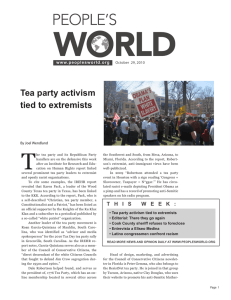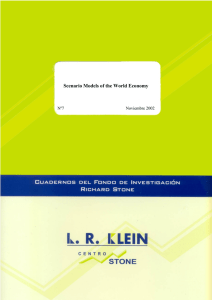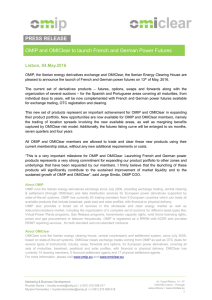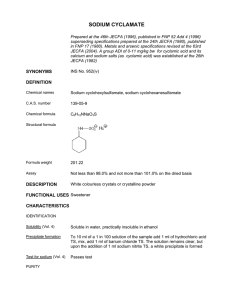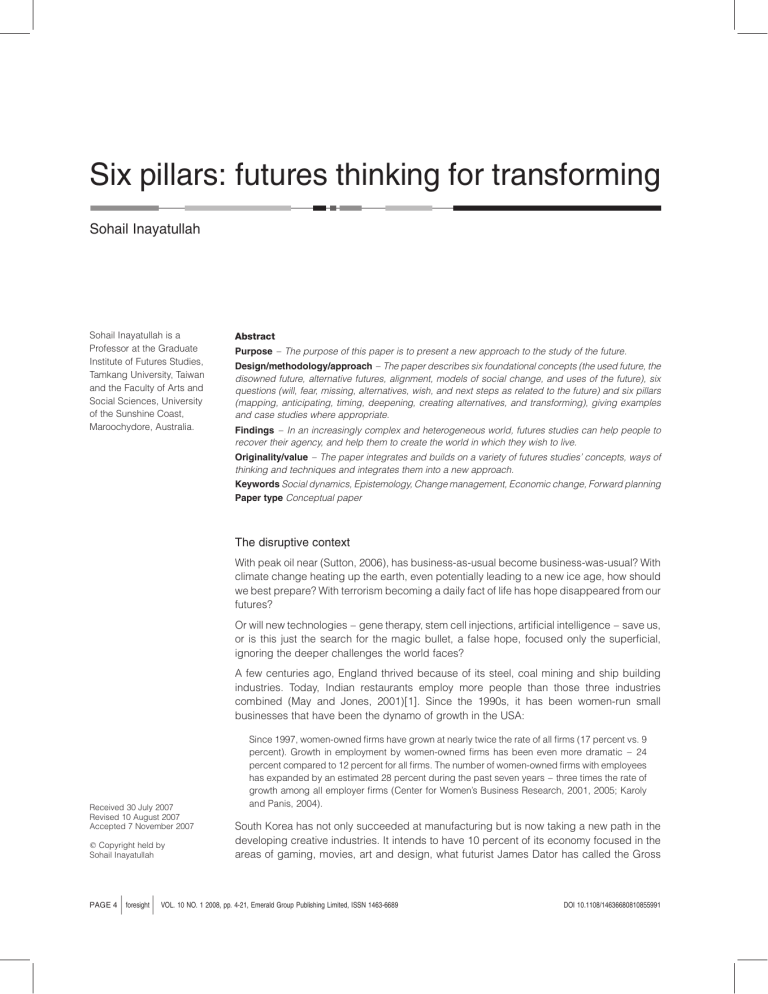
Six pillars: futures thinking for transforming Sohail Inayatullah Sohail Inayatullah is a Professor at the Graduate Institute of Futures Studies, Tamkang University, Taiwan and the Faculty of Arts and Social Sciences, University of the Sunshine Coast, Maroochydore, Australia. Abstract Purpose – The purpose of this paper is to present a new approach to the study of the future. Design/methodology/approach – The paper describes six foundational concepts (the used future, the disowned future, alternative futures, alignment, models of social change, and uses of the future), six questions (will, fear, missing, alternatives, wish, and next steps as related to the future) and six pillars (mapping, anticipating, timing, deepening, creating alternatives, and transforming), giving examples and case studies where appropriate. Findings – In an increasingly complex and heterogeneous world, futures studies can help people to recover their agency, and help them to create the world in which they wish to live. Originality/value – The paper integrates and builds on a variety of futures studies’ concepts, ways of thinking and techniques and integrates them into a new approach. Keywords Social dynamics, Epistemology, Change management, Economic change, Forward planning Paper type Conceptual paper The disruptive context With peak oil near (Sutton, 2006), has business-as-usual become business-was-usual? With climate change heating up the earth, even potentially leading to a new ice age, how should we best prepare? With terrorism becoming a daily fact of life has hope disappeared from our futures? Or will new technologies – gene therapy, stem cell injections, artificial intelligence – save us, or is this just the search for the magic bullet, a false hope, focused only the superficial, ignoring the deeper challenges the world faces? A few centuries ago, England thrived because of its steel, coal mining and ship building industries. Today, Indian restaurants employ more people than those three industries combined (May and Jones, 2001)[1]. Since the 1990s, it has been women-run small businesses that have been the dynamo of growth in the USA: Received 30 July 2007 Revised 10 August 2007 Accepted 7 November 2007 q Copyright held by Sohail Inayatullah PAGE 4 j foresight j Since 1997, women-owned firms have grown at nearly twice the rate of all firms (17 percent vs. 9 percent). Growth in employment by women-owned firms has been even more dramatic – 24 percent compared to 12 percent for all firms. The number of women-owned firms with employees has expanded by an estimated 28 percent during the past seven years – three times the rate of growth among all employer firms (Center for Women’s Business Research, 2001, 2005; Karoly and Panis, 2004). South Korea has not only succeeded at manufacturing but is now taking a new path in the developing creative industries. It intends to have 10 percent of its economy focused in the areas of gaming, movies, art and design, what futurist James Dator has called the Gross VOL. 10 NO. 1 2008, pp. 4-21, Emerald Group Publishing Limited, ISSN 1463-6689 DOI 10.1108/14636680810855991 National Cool (Dator and Seo, 2004). Bhutan has even invented Gross National Happiness (Karma and Karma, 2004; and see www.grossinternationalhappiness.org/gnh.html). And yet, even as the future disrupts, we remain tied to old patterns of behavior. We know we are more productive when we work from home, yet the 9-to-5 still dominates. We know that creating community hubs, which combine work and home, will reduce traffic congestion and pollution, yet millions make the daily commute to the office. We know we need to change but we seem unable to. The image of a new future, while emergent, is pulled down by the weight of the industrial era. What can we do? What should we do? One approach to answering these questions comes from the emerging discipline of futures studies. Futures studies seeks to help individuals and organizations better understand the processes of change so that wiser preferred futures can be created. Foundational futures concepts There are six basic concepts of futures thinking: the used future; the disowned future; alternative futures; alignment; models of social change; and uses of the future. The first is the concept of the used future. Have you purchased a used future? Is your image of the future, your desired future, yours or is it unconsciously borrowed from someone else? When we look at Asian cities, we see that they tend to follow the same pattern of urban development that western cities did generations ago (Inayatullah, 2004a). And yet many, if not most, western mayors now believe that they were mistaken. Instead of spending billions on unplanned growth, development without vision, they should have focused on creating liveable communities. They should have kept green public spaces separating developed regions. They now understand that their image the future – of unbridled growth without concern for nature or liveability – led to the gigantic megacities where while many had jobs, they suffered in almost every other way. Asian cities have unconsciously followed this pattern. They have forgotten their own traditions where village life and community were central, where living with nature was important. Now they must have find ways to create new futures, or continue to go along with the future being discarded elsewhere. This used future is leading to a global crisis of fresh water depletion, climate change, not to mention human dignity. The second concept is the disowned future (see Stone and Stone, 1989; Inayatullah, 2007). Our excellence is our fatal flaw, said the Greek writer Homer. What we excel at becomes our downfall. And we do not see this because we are busy focusing on our strategic plans. It is the self disowned, the future pushed away, that comes back to haunt us. The busy executive, focused on achievements, only in later life remembers his children. It is later in life that he begins to think about work-life balance, about his inner life. The organization focused on a strategic goal denies the exact resources it may need to truly succeed. In the story of the tortoise and the hare; we often focus on the hare – wanting to be the quickest and the smartest – but it is the tortoise, our reflective self that may have the answer to the future. Plans go astray not because of a lack of effective strategy but because the act of creating a particular direction ignores other personal and organizational selves. The challenge is to integrate our disowned selves: for the school principal to remember what it was like to be a child, to use her child self to create curriculum; for the army general to discover the part of him that can negotiate, that can learn from others. This means moving futures closer: from a goal oriented neo-Darwinian approach to a softer and more paradoxical Taoist approach. The third concept is alternative futures. We often believe that there is only one future. We cannot see the alternatives, and thus we make the same mistakes over and over. But by looking for alternatives, we may see something new. We are not caught in the straitjacket of one future. As well, if our particular future does not occur, we do not die from emotional shock, rather, we learn how to adapt to changing conditions. Many in the former Eastern Europe remain in a state of future shock. They believed there was only one future – the socialist one. When that disappeared, they did not know what to do, where to look. j j VOL. 10 NO. 1 2008 foresight PAGE 5 Alternative had not been mapped, the mind had become inflexible. Alternative futures thinking reminds us that while we cannot predict a particular future always accurately, by focusing on a range of alternatives, we can better prepare for uncertainty, indeed, to some extent embrace uncertainty. The fourth concept is alignment. We need to align our day-to-day problem-based approach with strategy. And we need to align strategy with the broader bigger picture, and the bigger picture with our vision and the vision with our day-to-day. Often we envision a particular future, and yet how we measure this future, our organizational indicators, have no relationship to that vision. Thus the vision fails, because everyone knows the vision is there for show so as to appear to look modern. While enabling and ennobling us, the vision must link to the day-to-day realities; our day-to-day measures must reflect the vision. There is also inner alignment. Often an organization or individual has a particular strategy of the future – to achieve a certain goal, but its inner map does not reflect that strategy. The inner map may even be in direct contradiction to this external reality. Thus there is a disconnect between what the leader may say or do or wish others to do and the inner map of the organization. The challenge is first to discern the inner map – how the organization sees itself. Is it youthful or mature? A tiger or an elephant? As well, how does the organization imagine the future? Does your organization believe the future is random; or that you are rushing down a rapid stream with rocks all around; or the future is like a game of snakes and ladders; or like a family? The inner map needs to reflect the outer map, and visa versa. The fifth concept is your model of social change. Do you believe that the future is positive and you can do something about it? Or is the future bleak and there is nothing you can do about it? Or is the future created by the 100th monkey? Or is the future already given, created by prophecy? Or perhaps you believe that the future is cyclical, everyone has a turn and the most effective strategy is to be patient. Or do you believe the future is not given, but created by our daily actions, and thus we must take the ‘‘bull by the horns’’. Or . . . The sixth concept is the use of the future. Futures thinking can simply be about foresight training, helping individuals and organizations with new competencies and new skills. At a deeper level, futures thinking can help create more effective strategy. By understanding the alternative, used and disowned futures, organizations can become far more innovative. At a deeper level, futures thinking can create capacity. It is not so much predicting correctly or getting the right strategy, that is, using the right tools, but about enhancing our confidence to create futures that we desire. Futures methods thus decolonize the world we think we may want – they challenge our basic concepts. They deconstruct. Enhancing capacity empowers individuals – this liberates and is scary for many as the safety of having others make decisions for one is taken away. The next deeper level is emergence. Futures thinking helps create the conditions for a paradigm shift. The organization imagines a new future, creates a new strategy, enables stakeholders, uses tools and then a new future emerges. The final deeper levels are about meme (Dawkins, 1989; Blackmore, 1998, p. 2; www. scholars.nus.edu.sg/cpace/infotech/cook/memedef.html)[2] and microvita change (Sarkar, 1991). Meme change is about changing the ideas that govern institutions and microvita is about the non-local field of awareness that makes sense of reality. Futures thinking ultimately can go far as mapping and changing memes and fields of reality. Thus, uses of the future: training; strategy; creating capacity; emergence; new memes; microvita change. There is a seventh concept, but that is the no-concept: that all listing of concepts becomes yet another cookbook that limits creativity, instead of creating innovation. Being present to changing sensitive conditions, allowing futures to emerge is central here. Along with these basic concepts, futures studies has six pillars. However, before we explore these pillars, one way to create the future you may desire is to respond to these futures questions. j j PAGE 6 foresight VOL. 10 NO. 1 2008 The six basic futures questions 1. What do you think the future will be like? What is your prediction? More and more progress and wealth? Wealth for the view? A dramatic technological revolution? Environmental catastrophe? Why? 2. Which future are you afraid of? Random acts of violence? Do you think you can transform this future to a desired future? Why or why not? 3. What are the hidden assumptions of your predicted future? Are there some taken-for-granted assumptions (about gender, or nature or technology or culture, or . . .)? 4. What are some alternatives to your predicted or feared future? If you change some of your assumptions, what alternatives emerge? 5. What is your preferred future? Which future do you wish to become reality for yourself or your organization? 6. And finally, how might you get there? What steps can you take to move in toward your preferred future? As it says in ancient Buddhist texts, much of the solution to the challenge of life is simply in being pointed in the right direction. Futures questions are summarized thus: will; fear; hidden assumptions; alternative futures; preferred future; and next steps. The six pillars of futures studies These six pillars of futures studies provide a theory of futures thinking that is linked to methods and tools, and developed through praxis. They can be used as theory or in a futures workshop setting. The pillars (MATDCT) are: mapping, anticipation, timing, deepening, creating alternatives and transforming. Mapping In the first pillar, past, present and future are mapped. By mapping time, we become clearer on where we have come from and where we are going. Three tools are crucial. The method ‘‘shared history’’ consists of having participants – in a futures workshop – write down the main trends and events that have led up to the present. A historical time line is then constructed to the present. Shared history asks: what are the continuities in our history, what is discontinuous? Has change been stable or have there been jumps in time? This opening tool creates a framework from which to move to the future. The futures triangle maps today’s views of the future through three dimensions. The image of the future pulls us forward. While there are many images of the future, five or so are archetypal. These are: 1. Evolution and progress – more technology, man as the centre of the world, and a belief in rationality. 2. Collapse – a belief that man has reached his limits, indeed he has overshot them: world inequity, fundamentalism, tribalism, nuclear holocaust, climate disasters all point to a worsening of the future. 3. Gaia – the world is a garden, cultures are its flowers, we need social technologies to repair the damage we have caused to ourselves, to nature and to others, becoming more and more inclusive is what is important. Partnership between women and men, humans and nature and humans and technology is needed. This is challenging the very notion of ‘‘man’’. 4. Globalism – we need to focus on ways to come closer as economies and as cultures. Borders need to break down; technology and the free flow of capital can bring riches to all. Traditional isms and dogmas are the barriers stopping us from achieving a new world. j j VOL. 10 NO. 1 2008 foresight PAGE 7 5. Back to the future – we are past our prime; we need to return to simpler times, when hierarchy was clearer, when technology was less disruptive, when the Empire was clear. Change is too overwhelming; we have lost our way, and must return. Along with images are the pushes of the present. These are quantitative drivers and trends that are changing the future. An aging population is one such trend. We are living longer and having fewer children. Which future will this trend push us to? Along with living longer, increased military spending and exports – especially by the five permanent members of the UN Security Council – is making the world a more dangerous place, as are the activities of terrorists. There are also weights. These are the barriers to the change we wish to see. Each image has differing weights. Those who imagine a globalized world are weighed down by nationalists and the brutal fact that while capital may be freer, labor is still tied to place. The Gaian image is weighed down by the dominance of hierarchy – male, empire or expertise. ‘‘The boss is always right,’’ is the guiding myth. By analyzing the interaction of these three forces, the futures triangle (see Figure 1) helps us develop a plausible future. The third tool is the futures landscape (see Figure 2). This tool helps us audit where our organization is. The landscape has four levels. First is the jungle, a dog-eat-dog competitive world, wherein the goal is to survive. Second is the chess set, where strategy helps us enhance our effectiveness – we succeed by being clear about our goals and creating more responsive organizations. Third are the mountain tops – these are the big pictures, the broader social contest we find our organizations in. Finally is the star, the vision. Is your organization engaged only in day-to-day survival, or is it using strategy to move forward? Has it developed scenarios of alternative futures, different assumptions of how the world might be? Does it have a vision? Anticipation The second pillar of futures thinking is Anticipation. There are two main methods here. Emerging issues analysis (Molitor, 2003) seeks to identify bell-wether regions, where new social innovation starts. It also seeks to identify issues before they become unwieldy and expensive. And, of course, to search for new possibilities and opportunities (see Figure 3). Emerging issues include disrupters such as: will robots have legal rights soon? Will meditation be part of every school curriculum? Will we develop pharmacies in our bodies? Will the smart toilet help us with early diagnostics? Will the slow cities movement redefine the 24/7 world? Will smart objects create more fuel-efficient houses, communities and businesses? Figure 1 The futures triangle j j PAGE 8 foresight VOL. 10 NO. 1 2008 Figure 2 The futures landscape Figure 3 Emerging issues analysis While solving emerging issues leads to little political pay off – i.e. voters will not reward the leader for solving tomorrow’s problems – they can help minimize harm and indeed help cities and other organizations respond far more swiftly to emerging challenges. Along with emerging issues analysis is the futures wheel (see Figure 4). The futures wheel seeks to develop the consequences of today’s issue on the longer-term future. We can ask how a particular new technology might influence us 20 years from now. The futures wheel does not stop at first order impacts, but rolls along to second order impacts, and beyond. It intends to explore and deduce unintended consequences. For example, using the futures wheel we can map logical implications of the creation of a new highway to a previously undeveloped city. Economic activity may increase, leading to more jobs, higher prices . . . As well, there may, over time, be more congestion as motorists travel on the road – pollution may go up, leading to increased health problems. The highway may change the locus of social networks to a previously more isolated area – a haves and have-nots scenario may emerge if the excitement of rapid growth continues at the expense of equity. j j VOL. 10 NO. 1 2008 foresight PAGE 9 Figure 4 The futures wheel The futures wheel helps anticipate future issues, create the possibility of new products and move from seeing the world at a simple unconnected level to a complex connected level. How the parts interact with the whole becomes clearer . . . Timing the future The third pillar is timing the future. This is the search for the grand patterns of history and the identification of each one of our models of change. Do we believe that it is the creative minority that creates the new system? Or do we believe that you can’t fight city hall, that is, deep change is impossible. Humans are essentially brutish, or lazy, or even evil. We can only resign ourselves to the fate of history. Or do we believe that change comes from inner reflection and spiritual practice? Changing the outside world is next to impossible – plus ça change, plus c’est la même chose. But by changing our consciousness we can change the world. Or is institutional change the key – if we can change laws and social structures then we can affect real change. It is not just enough to, for example, go to a higher level of consciousness to stop war or smoking; rather, peace forces are needed for stopping war. To reduce tobacco consumption, financial disincentives are required as well as social support networks to help individuals make the transition. Or is it really technology that counts most of all – we create technology and then it creates. We create the internet and now we define how we work – flexible but 24/7 – how we play – gaming – and even how we meet partners. j j PAGE 10 foresight VOL. 10 NO. 1 2008 Technology creates new economies and the tensions result when society lags behind, when power relations do not change. How do you time the future? We can also ask, what is your metaphor of the future? Do you believe the future is just luck or good karma? Or is the future a planned rational activity created by choice and risk analysis? Or is the future totally open, anything is possible; the world is a magical place? There is synchrodestiny, as Deepak Chopra writes (Chopra, 2005). Or is the future like a game of snakes and ladders – there is hard work but the world is a scary place and at any second, all the gains can disappear. Or is the future like a machine, regular, predictable, clockwork – there are patterns which once seen can help identify what will happen. Macrohistorians or grand thinkers have been wrestling with these questions for thousands of years (see Galtung and Inayatullah, 1997; Voros, 2006; Inayatullah, 2004b). From their thinking, a few foundational ideas result: B The future is linear, stage like, with progress ahead. By hard work, we will realize the good future. B The future is cyclical, there are ups and downs. Those at the top will one day find themselves at the bottom. Because they are on the top, they are unable to adapt and adjust as the world changes. Their success was based on mastery of yesterday’s conditions. Few are able to reinvent their basic values. B The future is spiral – parts are linear and progress based, and parts are cyclical. With leadership that is courageous and has foresight a positive spiral can be created. The dogmas of the past are challenged but the past is not disowned, rather it is integrated in a march toward a better future. B New futures are more often than not driven by a creative minority. They challenge the notion of a used future. Instead of imitating what everyone else is doing, they innovate. This can be social, political, cultural, spiritual or technological innovation. These change agents imagine a different future, and inspire others to work toward it. When there is no creative minority, instead of sustainable systems what results are bigger and bigger empires and world-states. Power and bureaucracy continue unchallenged, charisma becomes routinized and the hunger for something different, that can better meet human needs, drifts away. Size or growth takes over, inner and outer development disappear. B There are hinge periods in human history, when the action of a few can make a dramatic difference. It is in these periods, especially, that old ways of behavior are no longer helpful: what succeeded before no longer works now. We are likely in this phase now. The social Darwinian notion of competition now endangers us all – but Darwin also wrote about love (Loye, 2000, 2004). For him, this human sensitivity that is far more important than the survival of the fittest. Evolution is perhaps moving from randomness to conscious visioned direction. We are no longer able to keep on pushing crises back, focusing only the litany, the superficial, instead of resolving the deeper issues. Man over nature may have brought technological progress but it now threatens to extinguish us all. The creation of the nation-state was a wonderful solution to the problem of empire versus localism, of the knight versus the priest, however, nationalism threatens us all, and thus new governance systems are needed. Masculinist reductionist science has truly been a miracle but now a move toward holism is required. What worked in previous eras – the agricultural and the industrial – is unlikely to help us in a global post-industrial era. Indeed, in this view of history, the image leads reality – the image is of a transcendental jump, but the reality is lost in industrial modernist masculinist reductionism (see Riane Eisler’s work, at www.partnershipway.org). Conscious evolution is the key in this approach (Sahtouris, 2002). The world is a complex adaptive system – once we map the future – it changes. Thus, while we need a vision, we do not need a blueprint. j j VOL. 10 NO. 1 2008 foresight PAGE 11 Deepening the future Pillar four is deepening the future. Two methods are decisive. First is causal layered analysis (Inayatullah, 2004c) and second is four-quadrant mapping. Causal layered analysis (CLA) seeks to unpack, to deepen the future. It has four dimensions. The litany or the day-to-day future, the commonly accepted headlines of the way things are or should be. Solutions to problems are at this level usually short term. The second dimension is deeper, focused on the social, economic, political causes of the issue. The third dimension is the culture or worldview. This is the big picture, the paradigm that informs what we think is real or not real, the cognitive lenses we use to understand and shape the world. The fourth dimension is the myth or the metaphor – this is the deep unconscious story. Levels 1 and 2 are most visible, levels 3 and 4 are broader and deeper and more difficult to identify. Outsiders are far more effective in discerning these levels of reality. If we look at health care (Table I), we know that there is a high rate of medical mistakes leading to serious injury or death. At level one, the solution is more training for health practitioners, particular doctors. At level two, we search for causes for these mistakes. Is it lack of communication between health professionals? The state of the hospital? Lack of understanding of new technologies? Mis-administration of medicine? Systemic solutions seek to intervene by making the system more efficient, smarter, ensuring that all parts of the system are seamlessly connected. But if we move to a deeper, worldview level, we see the problem may in fact be the paradigm of western medicine itself: its reductionism, its focus on technique and the disowning of its softer and holistic potentials. The doctor remains far above, the nurse below and the patient even lower. It is the hierarchy of knowledge that is the root problem at this level. Merely more training or more efficient systems ignores power. The solution is to empower patients, or a move to different health systems – complementary health systems, for example. Certainly, alternative health is the disowned self of modern medicine. Though now many researchers are integrating these opposites – using modern and ancient medicine to develop better outcomes. At the myth level, the deeper problem is the notion of ‘‘doctor knows best’’. Patients give up their power when they see medical experts – patients enter the hospital system and immediately regress to their child selves. Doctors resort to expert selves – and with dehumanized bureaucracies ensuring a focus on efficiency, mistakes keep on happening. CLA seeks to integrate these four levels of understanding. Each level is true, and solutions need to be found at each level. Thus policy solutions can be deeper. Litany interventions lead to short-term solutions, easy to grasp, packed with data. Systemic answers require interventions by efficiency experts. Governmental policies linked to partnership with the private sector often results. Worldview change is much harder and longer term. It requires seeking solutions from outside the framework in which the solution has been defined. And myth solutions require deepest interventions, as this requires telling a new story, rewiring the brain and building new memories and the personal and collective body. Table I Applying causal layered analysis to medical mistakes Causal layered analysis level Medical mistakes j j PAGE 12 foresight VOL. 10 NO. 1 2008 Litany High rate of medical mistakes Solution: more GP training Systemic causes Audit on causes of mistakes: communication, new technologies, administration Solution: more efficient, smarter systems Worldview Reductionist modern medical paradigm creates hierarchy Solution: enhance power of patients and/or move to different health systems Myth/metaphor ‘‘Doctor knows best’’ Solution: ‘‘Take charge of your health’’ When we examine cities (Table II), litany problems are often congestion and pollution. Solutions tend to be to expand roads and regulate emissions. Systemic solutions focus on travel choices, linking roads with rail, creating seamless traffic patterns. Integrated transport planning is the buzzword strategy. At the worldview level, the issue is far less about finding solutions within the paradigm of the large city, but asking how the city can in some ways be undefined. Can the city be decentralized? Can time policies be developed that move us away from the industrial paradigm, creating home-work-school hubs that do not require travel by car. Can personal carbon credit cards be created so that citizens monitor their own greenhouse gas emissions? At the deepest level is the story of the great city. Is it the search for the streets of gold? Can we create stories that revalue the village? Instead of ‘‘bigger is better’’ can we remind ourselves of the village fireplace where community was best? As important as CLA is four-quadrant mapping. Developed by Ken Wilber and Richard Slaughter, four-quadrant mapping develops the inner dimension of CLA (Slaughter, 2005). There are four quadrants – the first is the inner-individual – this is the meanings we give to the world that must change. Second is the outer-individual – the behavior we engage in. Third is the outer-collective. This is the official strategies organizations undertake. And last is the inner-collective – this is the inner map of organizations. Most policy focuses only on the outer-collective, and very little on the inner collective (or on carrots and sticks, incentives and fines, so as change individual behavior, as in Singapore). But again, very little on the meanings individuals give to change in behavior. For example, falling birthrates and individuals living longer is leading to the problem of the aging and even an under-populated society. Most governments are focused on the external dimensions – the outer-collective (Table III). They are delaying retirement, asking individuals to save more, or reducing taxes on retirement funds. Or they are providing baby bonuses, hoping individuals will have more children. As one politician said, ‘‘have two children for Table II Exploring city futures with causal layered analysis Causal layered analysis levels City futures Litany Congestion and pollution Solution: expand roads and regulate emissions Systemic causes Audit of points of congestion, exploration of new technologies and travel choices Solution: integrated planning and expansion of travel choices Worldview Modernist centralized city Solution: redefine the city, decentralize the city and rethink time – develop city time policies Myth/metaphor ‘‘Bigger is better’’ Solution: ‘‘Create postmodern village’’ Table III A four-quadrant map of the lifecycle Inner Outer Self Feeling good about ageing Personal health Coming to terms with death How others see me ageing Biological clock Chronological clock Social inclusion Diet Exercise Collective Inner map of life cycle (birth-student-work-retirement) Alternative maps of lifecycle Delaying retirement Baby bonuses for families j j VOL. 10 NO. 1 2008 foresight PAGE 13 mum and dad, and one for the nation’’ (Treasurer Peter Costello, cited in McDonald, 2007). But this ignores the inner-collective. This is the map of aging, the lifecycle. This has been classically birth-student-work-retirement-death. But this map is being challenged by trends and emerging issues. We are students not just from five to 18 but now our entire lives – lifelong learning is a necessity for reskilling. Work is no longer about one job, but about multiple careers and even the portfolio career, having multiple jobs at the same time. And for many, it is the casualization of the workforce, having short term insecure low paying jobs. Finally, retirement is not only being pushed back, but many are rethinking work, ideally desiring to mix work and play their entire lives, even every day, challenging the five day on and two day off pattern. And death too is being beaten back. New technologies, the genetics revolution, better diet – and more and more scientific information – all are leading to, at least for those that benefit from globalization, longer lives. Thus, the inner map is becoming more and more irrelevant. What is needed are new maps of the life cycle. At the individual level, it is the fear and embracing of aging and death that is crucial, what has been called active aging. Some are embracing aging and others are fearful and making the cosmetics and pharmaceutical industry rich beyond imagination. Let us take an example that further combines these two approaches (Tables IV and V). At the litany level, there is increasing evidence that regular drinking of green tea decreases the changes of getting cancer. Pharmaceutical companies are now searching for the specific property of green tea that does this – so it can be used as a medicine. At the systemic level, the preparation of green tea – what specific technologies are used, the cultivation of tea leaves, even its distribution – becomes salient. At the worldview level, it is how green tea is consumed that becomes salient. Is it because green tea is drunken collectively that is as important as the specific ingredients; is it the collectivist structure of East Asian society, the social nature of tea drinking that is a compounding factor? As well, in Japan, are the rituals associated with tea drinking – the tea ceremony – an important part of this? Tea is thus contextual, part of a worldview. At the myth level, is it then about slow time, long life. Is tea part of a different way of timing the world? Table IV Causal layered analysis on green tea and cancer Causal layered analysis levels Green tea and cancer Litany Drinking green tea reduces likelihood of getting cancer Systemic causes Issues of cultivation, production and distribution Worldview Discourse 1: Social nature of tea drinking, slow time, collective relations Discourse 2: Pharmaceutical: specific elements of green tea are anti-cancer Myth/metaphor Myth 1: green tea as cancer cure Myth 2: green tea as part of slow time Table V Four-quadrant map on green tea j j PAGE 14 foresight VOL. 10 NO. 1 2008 Inner Outer Self Feelings about tea – it relaxes me Tea consumption – when and how much. Tea makes me healthy Collective Cultures of tea (slow time) versus cultures of coffee (globalization and fast time) Strategies for marketing tea, given evidence claims linking tea to health Role of culture in tea This layered analysis points out that while certainly particular compounds in tea may be crucial in fighting cancer, systemic, worldview and myth dimensions of reality may be equally important. Isolating an element from the social may have risks. At the inner-individual level, thus, the meanings and feelings one gives to drinking tea are crucial: ‘‘It relaxes me’’. Or, once there is evidence about green tea and anti-oxidants, tea makes me healthy. That is, my belief system is complicit in my health realities. At the outer-individual level, it is how many cups I drink a day, when do I drink tea, how many times a day, with whom? At the outer-collective level, this becomes more crucial, what role does tea play in culture? Is it just a drink? Or are the social, economic, and worldview dimensions crucial? As well, at this level, strategically, how best can companies take advantage of latest research on tea, and how might they use tea to spread or share their culture with others? Finally, at the inner-collective level, what does tea mean for the culture – does it differentiate between tea and coffee cultures? Is it part of being East Asian? Is it part of slow time? Thus CLA and the four-quadrant method go hand in hand, indeed, the four-quadrant method is an inner CLA. After the future is deepened, we can then broaden it, using the fifth pillar. Creating alternatives The fifth pillar is creating alternative futures. There are two important methods in this pillar. The first is nuts and bolts[3]. This consists of undertaking a structural functional analysis of the organization and then finding different ways of doing what it does. If it is an educational organization, one may ask, challenge, current roles: administrators (what are some other ways to manage information and competencies, can AI replace humans, for example?); teachers (who should teach, should jobs be tenured); students (from the locale, global, web, part time, only humans, all ages); and where (from campus, or remote, or . . .). The key is to create an organizational functions chart and then search for new structures to engage in those functions. For example, with the courts, currently judges decide cases (who else could or should, i.e. mediators, robots?), currently cases are heard in court rooms (can there be e-mediation, e-dispute resolution, neighbourhood community dispute resolution centres?). The second way to create alternative futures is via scenarios. Scenarios are the tool par excellence of futures studies. They open up the present, contour the range of uncertainty, offer alternatives, and even, better predict. There are multiple scenario methods: single variable; double variable; archetypes; organizational; and integrated. The first is the multi-single variable. This is derived from the futures triangle. Based on the images or the drivers, a range of scenarios or stories/pictures of the future are created. From a conference on the futures of health, based on the drivers of technology, corporatization, values and demographic and cultural shifts, four futures resulted. These were: star trek high-tech health; multinational taking over local general practitioners; back to the local GP, the wise elder of the community; and multi-door medicine which focused on the GP as the gatekeeper for genomics, alternative medicine, web medicine and community medicine[4]. The second method – the double variable method – identifies the two major uncertainties and develops scenarios based on these. This method, among others, has been developed by Galtung (1998), see also www.transcend.org. For example, for the futures of disability, the two critical uncertainties are the nature of change and who are the change agents[5]. Will it be material technologies – genetic, digital, brain – or will it be social technologies – building design, microcredit, social marketing – that change the life of persons with disability? Will change be led by government (plus corporations) or by persons with disability themselves? Based on these uncertainties, four futures are possible (Figure 5). The first is Big Government and Big Science. Persons with disability are the objects of research, though there may be some community consultation. Disability is a problem to be solved. j j VOL. 10 NO. 1 2008 foresight PAGE 15 Figure 5 Double variable scenario method The second is Big Government with social enabling. Government still does the change but it does so to create more enabling futures for persons with disability. There is far more community consultation, but the questions asked in the consultation are still derived by government. Persons with disability are more empowered but still look to government for solutions. The third is technological change but with persons with disability running the show. This may be the Christopher Reeve model at one level, at another it is strong advocacy along with which technologies will hold the most promise – where should the investment go – to stem cell research or to AI systems to make the daily trials of persons with disability easier. There is considerable debate here, but the key is that persons with disability play a central role in the funding, the development and the creation of this future. Smart plus inclusion is the mantra here. The fourth is social enabling technologies developed by persons with disability. Nothing about us, without us, is the catch cry. In this future, persons with disability are not the problem; indeed, they define the issues and work on developing social technologies to create their desired futures. The problem is in all of us – the problem is how to collectively create a better society. Developed by James Dator, the third method articulates scenario archetypes (Dator, 1979; www.futures.hawaii.edu). These are: j j PAGE 16 foresight VOL. 10 NO. 1 2008 B Continued growth – where current conditions are enhanced: more products, more roads, more technology, and a greater population. Technology is considered the solution to every problem. B Collapse – this future results as continued growth fails. The contradictions are too great: between the economy and nature; between men and women; between the speculative and the real economy; between religious, secular and postmodern approaches; and between technology and culture. B Steady state – this future seeks to arrest growth and find a balance in the economy and with nature. It is a balanced, softer and fairer society. Community is decisive in this future. Steady state is both back to nature and back to the past. Human values are first here. Technology is often seen as the problem. B Transformation – this future seeks to change the basic assumptions of the other three. Transformation comes out either through dramatic technological change (artificial intelligence eliminates the courts, bureaucracy and many forms of governance; genetics changing the nature of nature, for example) or through spiritual change (humans change their consciousness, not just values, but the experience of deep transcendence). Taking these four scenarios, one can incast or articulate how one’s organization would look in each of these scenarios. For example, will East Asia (Table VI) continue to grow, becoming more and more the centre of the world economy, or will there be a collapse because of lack of transparency, because of overgrowth leading to SARS-like diseases, or because of an open economy challenging authoritarian leadership systems? Or will East Asia find a neo-Confucian balance, focusing neither too much on material values nor on tradition? Or can East Asia transform: will dramatic changes in science and technology (robotics and gaming) change culture; will a Taoist Zen resurgence deeply transform the patriarchy of Confucian culture? Developed by Peter Schwartz (1995, 1996) of the Global Business Network, the fourth model of scenario writing is organizational focused. The scenario structure is composed of four variables: best case (where the organization desires to move towards); worst case (where everything goes bad); outlier (a surprise future based on a disruptive emerging issue) and business as usual (no change). In a project for the Australian Government Pharmaceutical Industry Alliance, this method was used (Table VII)[6]. The scenarios were: Science Olympics wherein the educational system is focused on a science curriculum that is attractive and engaging. It is valued the way sports currently are. There is investment and winners are rewarded. The worst case was a long-term recession where investment for biotech dried up, and companies were saddled with decreased sales even while they had to meet societal obligations for delivering affordable pharmaceuticals. The best and brightest would leave the country for better horizons elsewhere (Singapore, South Korea or the UK). In the outlier scenario, genetics and digitalization would change the nature of drugs (a pharmaceutical factory in your body, monitoring your daily needs, or gene therapy eliminating many diseases and thus the need for drugs). Business as usual would be no clear strategy, other nations steaming ahead, pharmaceutical being criticized by the public and science not considered an attractive field for young persons. The fifth scenario methodology has four dimensions: the preferred, the world we want; the disowned, the world that we reject or are unable to deal with; the integrated, where owned and disowned are united in a complex fashion. And last is the outlier, the future outside of these categories. For example, in a workshop for Brisbane City Council[7] on refreshing the vision for Brisbane 2026 (Table VIII), in the preferred, employees desired a more multicultural organization; gender partnership, a green city focused on sustainability; strong balance between work and home, and even a focus on spiritual practice and values. The Table VI Dator method: four scenario archetypes for East Asia Scenarios Continued growth Collapse Description East Asia continues to grow, Overgrowth, lack of becoming the centre of the transparency, SARS-like world economy diseases, and authoritarian system lead to a collapse Steady state Transformation Neo-Confucian balance created, balancing material values and tradition Dramatic changes in science and technology transform East Asia Resurgence of Taoist Zen culture transforms Confucian culture Table VII Schwartz method: scenarios for the Australian pharmaceutical industry Scenarios Best case Worst case Outlier Business as usual Description Science Olympics – education systems are focused on science curriculum Long-term recession. Investment dries up and best and brightest leave for overseas Genetics and digitalization change the nature of drugs, i.e. gene therapy eliminates numerous diseases No clear strategy, losing out to other nations and pharmaceutical industry criticized by the public j j VOL. 10 NO. 1 2008 foresight PAGE 17 Table VIII A fifth scenario method applied to the future of Brisbane Scenarios Preferred Disowned Integrated Outlier Description Multicultural Gender partnership Work-home balance Sustainability Spiritual values Economic – how to make money Strategic competitive Material – engineering, roads, garbage Sustainability gives the competitive edge Green technologies can be applied to waste disposal and road construction New diseases challenge the city combination of these characteristics would make Brisbane unique. The disowned, they believed, was the economic (how will we make money) and the strategic competitive – can we compete if we are more balanced in a dog eat dog world and the material, issues of engineering, roads and garbage. In the integrated scenario, they saw that sustainability may give them a competitive edge; green technology principles could be applied to waste disposal and to road construction (focused not just on roads but on enhancing travel choices vis-à-vis bikeways, light rail, cars, buses, taxis and walking). Their preferred scenario would decrease pollution, enhance longevity. Spiritual practices would likely increase productivity as individuals had more clarity about their goals. The outlier was new diseases challenging the nature of the city. Transforming the future The final pillar is Transformation. In transformation, the future is narrowed toward the preferred. Which future do individuals desire? Which futures do cities want? The preferred future can result from scenarios. It can also be created by a process of questioning. Questioning consists of asking individuals about a preferred day in their life in the future. What happens once they wake up? What does their home look like? What type of technologies do they use? Who do they live with? What is the design of their home? What types of building materials were used? Do they go to work? What does work look like? Do they travel to work? How? What do they eat? These questions force individuals to think in more detail about the world they would like to live in. The preferred future can also be discerned through a process of creative visualization. In this process, individuals are asked to close their eyes and enter a restful state. From there, in their minds’ eye, they take steps to a hedge or wall (the number of steps is based on how many years into the future they wish to go). Over the hedge is the preferred future. They walk into that future. The facilitator asks them for details such as: Who is there? What does the future look like? What can they see, smell, hear, touch, taste? Intuit? This exercise articulates the future from the right brain – it is more visual. The three visioning methods – the analytic scenario, the questioning and the creative visualization – are then triangulated to develop a more complete view of the future. The vision can then be backcasted (Figure 6). This method, developed by Elise Boulding (Boulding and Boulding, 1995), works by moving individuals into the preferred future – or any particular scenario, for example, the worst case. We then ask, in the instance of the preferred, what happened in the last 20 years to bring us to today? What are their memories of the last 20 years? What needed to happen? What were the trends and events that created today? Backcasting fills in the space between today (the future) and the past. Doing so makes the future far more achievable. The necessary steps to achieve the preferred future can then be enacted. This can done via a plan or via action learning steps, where a process of experimentation begins to create the desired future. This can be a budgeted for transition strategy or a full-scale reengineering. Backcasting as well can be used to avoid the worst case scenario. Once the steps that led to the worst case scenario are developed, then strategies to avoid that scenario can be enacted upon. j j PAGE 18 foresight VOL. 10 NO. 1 2008 Figure 6 Backcasting What happens though when there is conflict between visions of the future? Johan Galtung’s transcend method is an excellent way forward (www.transcend.org). It focuses not on compromise, or far worse, withdrawal, but finding win-win solutions. To do so, all the issues that are contested in the two visions need to be spelled out. And then through a process of brainstorming, alternatives creating, new ways to integrate the visions can occur. In one case, one group desired a green sustainable city; another group a far more exciting modern international glamorous city. Through the transcend method (Figure 7), the greens understood that their city would become boring. They thus realized that the glamorous vision was a way to recover that aspect of their disowned personalities, but also that the modern dimension of the city could help them innovate. The modernists understood that without sustainability as a guiding principle there would be no way forward for anyone – both aspects of the vision needed each other. Figure 7 The transcend method j j VOL. 10 NO. 1 2008 foresight PAGE 19 The future thus has six foundational concepts, six questions and six pillars. As the world becomes increasingly heterogeneous, as events from far away places dramatically impact how, where, when, why and with whom we live and work, futures studies can help us recover our agency. By mapping the past, present and future; by anticipating future issues and their consequences; by being sensitive to the grand patterns of change; by deepening our analysis to include worldviews and myths and metaphors; by creating alternative futures; and by choosing a preferred and backcasting ways to realize the preferred, we can create the world we wish to live in. Futures thinking does not wish to condemn us to hope alone[8]. Notes 1. The Indian steel company Mittal is even eying purchasing the football club, Red Star Belgrade. 2. The Oxford English Dictionary defines meme as: ‘‘An element of a culture that may be considered to be passed on by non-genetic means, esp. imitation’’. 3. This was developed at the Hawaii Judiciary, particularly as input into the Hawaii Judiciary Foresight Conference, Honolulu, 6 January, 1991. 4. These scenarios were first developed at the Queensland Conference on General Practice organized by Eric Dommers, 11-12 February, 2000, Brisbane. They were modified and presented at the National Conference of Australian Divisions of General Practice, 22 November, 2003. 5. This analysis is based on multiple meetings and workshops with the Queensland Government Department of Disability Services (September 2006 and July 2005), the Endeavour Foundation (April-July 2006), and the Parent to Parent Association Queensland (March 2007). 6. August to October, 2001 – Melbourne, Brisbane and Sydney. The full project report is available from the Australian Government’s Department of Industry, Science and Resources. 7. Organized by Jennifer Bartlett of Brisbane City Council, 3 March, 2006, Brisbane, Australia. 8. To paraphrase John Cleese from his movie Clockwork: ‘‘despair I can handle, it is hope that is the killer’’. References Blackmore, S. (1998), ‘‘Imitation and the definition of a meme’’, Journal of Memetics – Evolutionary Models of Information Transmission, Vol. 2, available at: http://cfpm.org/jom-emit/1998/vol2/ blackmore_s.html Boulding, E. and Boulding, K. (1995), The Future: Images and Processes, Sage, London. Center for Women’s Business Research (2001), Number of Minority Women-owned Businesses Expected to Reach 1.2 Million in 2002, Center for Women’s Business Research, Washington, DC, available at: www.cfwbr.org/press/details.php?id ¼ 54 (accessed: 4 July 2007). Center for Women’s Business Research (2005), Capturing the Impact: Women-owned Businesses in the United States, Center for Women’s Business Research, Washington, DC, available at: www.bizjournals. com/bizwomen/facts/impact.html Chopra, D. (2005), Synchrodestiny, Rider & Co., London. Dator, J. (1979), ‘‘The futures of cultures and cultures of the future’’, in Marsella, T., Ciborowski, T. and Tharp, R. (Eds), Perspectives on Cross Cultural Psychology, Academic Press, New York, NY. Dator, J. and Seo, Y. (2004), ‘‘Korea as the wave of a future: the emerging dream society of icons and aesthetic experience’’, Journal of Futures Studies, Vol. 9 No. 1, pp. 31-44. Dawkins, R. (1989), The Selfish Gene, Oxford University Press, Oxford. Galtung, J. (1998), Essays in Peace Research, Vols. 1-6, Christian Ejlers, Copenhagen. Galtung, J. and Inayatullah, S. (Eds) (1997), Macrohistory and Macrohistorians, Praeger, Westport, CT. Inayatullah, S. (2004a), ‘‘Cities create their future’’, Journal of Futures Studies, Vol. 8 No. 3, pp. 77-81. j j PAGE 20 foresight VOL. 10 NO. 1 2008 Inayatullah, S. (2004b), ‘‘Editor of Special issue on Macrohistory: contributing authors include Anthony Judge, Phillip Daffara, James Dator, Yongseok Seo, Jay Weinstein, Walter Truett Anderson, William Halal, Anodea Judith, and Jay Earley’’, Journal of Futures Studies, Vol. 9 No. 1. Inayatullah, S. (Ed.) (2004c), The Causal Layered Analysis Reader, Tamkang University Press, Tamsui. Inayatullah, S. (2007), ‘‘Alternative futures of occupational therapy and therapists’’, Journal of Futures Studies, Vol. 11 No. 4. Karma, U. and Karma, G. (2004), Gross National Happiness and Development, Centre for Bhutan Studies, Thimbu. Karoly, L.A. and Panis, C. (2004), The 21st Century at Work: Forces Shaping the Future Workforce and Workplace in the United States, Report prepared for the US Dept of Labor, Rand, Santa Monica, CA, March. Loye, D. (2000), Darwin’s Lost Theory of Love, iUniverse, San Jose, CA. Loye, D. (Ed.) (2004), The Great Adventure, State University of New York Press, New York, NY. McDonald, P. (2007), ‘‘Magic number may be a reality’’, The Australian, 28 June, available at: www. theaustralian.news.com.au/story/0,25197,21980634-5013169,00.html May, G. and Jones, D. (2001), ‘‘Futures toolkit’’, United Kingdom Local Governmental Association, available at: www.lga.gov.uk/lga/toolkit/futures%20methods.pdf (accessed 2007). Molitor, G. (2003), The Power to Change the World: The Art of Forecasting, Public Policy Forecasting, Potomac, MD. Sahtouris, E. (2002), Earth Dance: Living Systems in Evolution, iUniverse, San Jose, CA. Sarkar, P.R. (1991), Microvitum in a Nutshell, 3rd ed., Ananda Marga Publications, Calcutta, available at: http://microvita.org Schwartz, P. (1995), ‘‘Scenarios: the future of the future’’, Wired, October. Schwartz, P. (1996), The Art of the Long View, Doubleday, New York, NY. Slaughter, R. (2005), Futures beyond Dystopia, Routledge, London. Stone, H. and Stone, S. (1989), Embracing Our Selves: The Voice Dialogue Manual, New World Library, Novato, CA. Sutton, P. (2006), personal e-mail to the author, 28 August, available at: Philip.Sutton@ green-innovations.asn.au Voros, J. (2006), ‘‘Nesting social-analytical perspectives: an approach to macro-social analysis’’, Journal of Futures Studies, Vol. 11 No. 1, pp. 1-22. About the author Sohail Inayatullah is a Professor in the Graduate Institute of Futures Studies, Tamkang University and Faculty of Arts and Social Sciences, University of the Sunshine Coast, Australia. He can be contacted at: [email protected] To purchase reprints of this article please e-mail: [email protected] Or visit our web site for further details: www.emeraldinsight.com/reprints j j VOL. 10 NO. 1 2008 foresight PAGE 21
